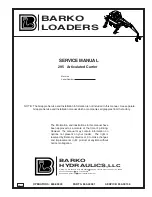
11.1 pH Electrode Care and Maintenance
The pH electrode is especially susceptible to dirt and contamination. Regular cleaning is
necessary depending on the extent and condition of use.
AFTER MEASURING:
Rinse the pH electrode in distilled water, and store the electrode in a suitable electrode
storage solution.
CLEANING THE ELECTRODE:
•
Salt deposits: Soak the electrode in warm tap water to dissolve deposits, then thoroughly
rinse with distilled water.
•
Oil or Grease film: Wash the electrode bulb gently in some detergents and water. If
necessary, use isopropyl alcohol to clean the electrode bulb, then rinse with distilled
water. Place the sensor in the electrode storage solution for 30 minutes.
•
Clogged reference junction: Heat a diluted KCl solution to 60
o
C to 80
o
C. Place the tip of
the electrode into the heated solution for about 10 minutes. Allow the electrode to cool in
some room temperature KCl solution.
•
Protein deposits: Prepare a 1% pepsin solution in 0.1M of HCL. Place the electrode in the
solution for 10 minutes. Rinse the sensor with distilled water.
REACTIVATING THE ELECTRODE:
•
If stored and cleaned properly, the electrode should be ready for immediate use.
However, a dehydrated bulb may cause sluggish response. To rehydrate the bulb,
immerse the electrode in a pH 4.01 buffer solution for 10 to 30 minutes. If this fails, the
electrode requires activation.
•
Soak the pH electrode in 0.1M HCl for 5 minutes.
•
Remove and rinse with deionised water, then place in 0.1M NaOH for 5 minutes.
•
Remove and rinse again, and soak in electrode storage solution for 30 minutes.
11.2 ORP Electrode Care and Maintenance
•
Ensure that the ORP electrode is thoroughly washed with distilled water after each use.
•
In aggressive chemicals, dirty or viscous solutions, and solutions with heavy metals or
proteins, take readings quickly and rinse electrode immediately after.
•
If the electrode is not in use for long periods, store the electrode with a suitable electrode
storage solution.
CLEANING THE ELECTRODE:
Contamination of the sensor often results in slow response and inaccurate readings. If
necessary, clean the element by one of the following procedures:
Inorganic Deposits:
•
Soak the ORP electrode in 0.1M HCl for 10 minutes.
•
Remove and rinse with distilled water, then place in isopropyl alcohol for 5 minutes.
•
Remove and rinse again, and soak in pH 4.01 buffer solution for 15 minutes.
Summary of Contents for WSL25 Pro
Page 1: ...AquaSafe WSL25 Pro Water Safety Laboratory Instruction Manual ...
Page 7: ...Section 3 AquaSafe Micro biological Incubator Instruction Manual ...
Page 25: ...Section 4 AquaSafe Membrane Filtration Instruction Manual ...
Page 41: ...Section 5 HydroTest Photometer HT1000 ...
Page 108: ...Section 6 HydroCheck HC1000 Multi Parameter Electrochemical Water Tester Instruction Manual ...
Page 141: ......
Page 147: ...Zero oxygen solution is contaminated Replace the calibration solution ...
Page 152: ...NOTES ...









































